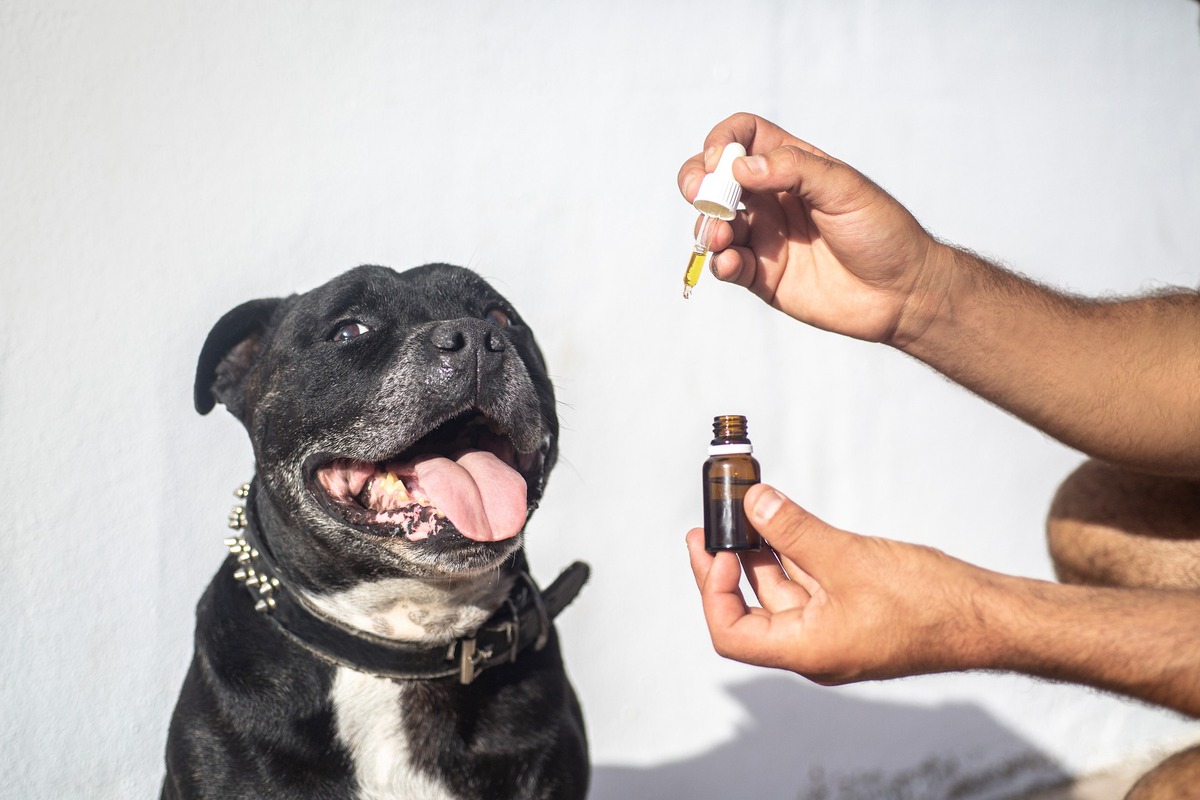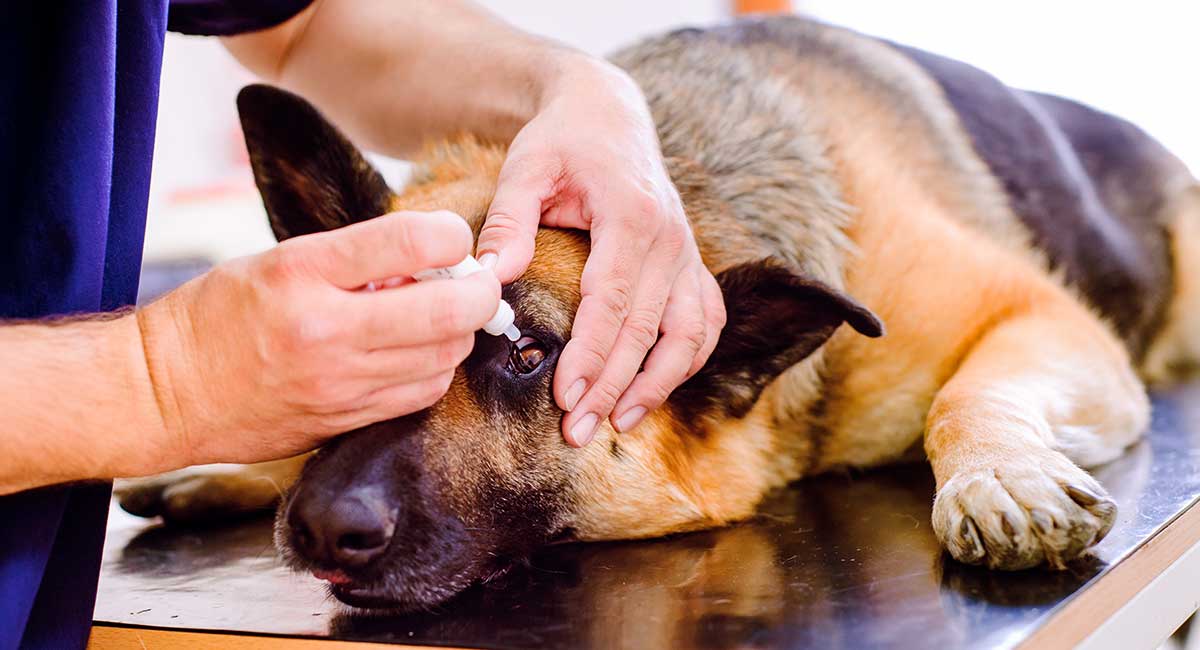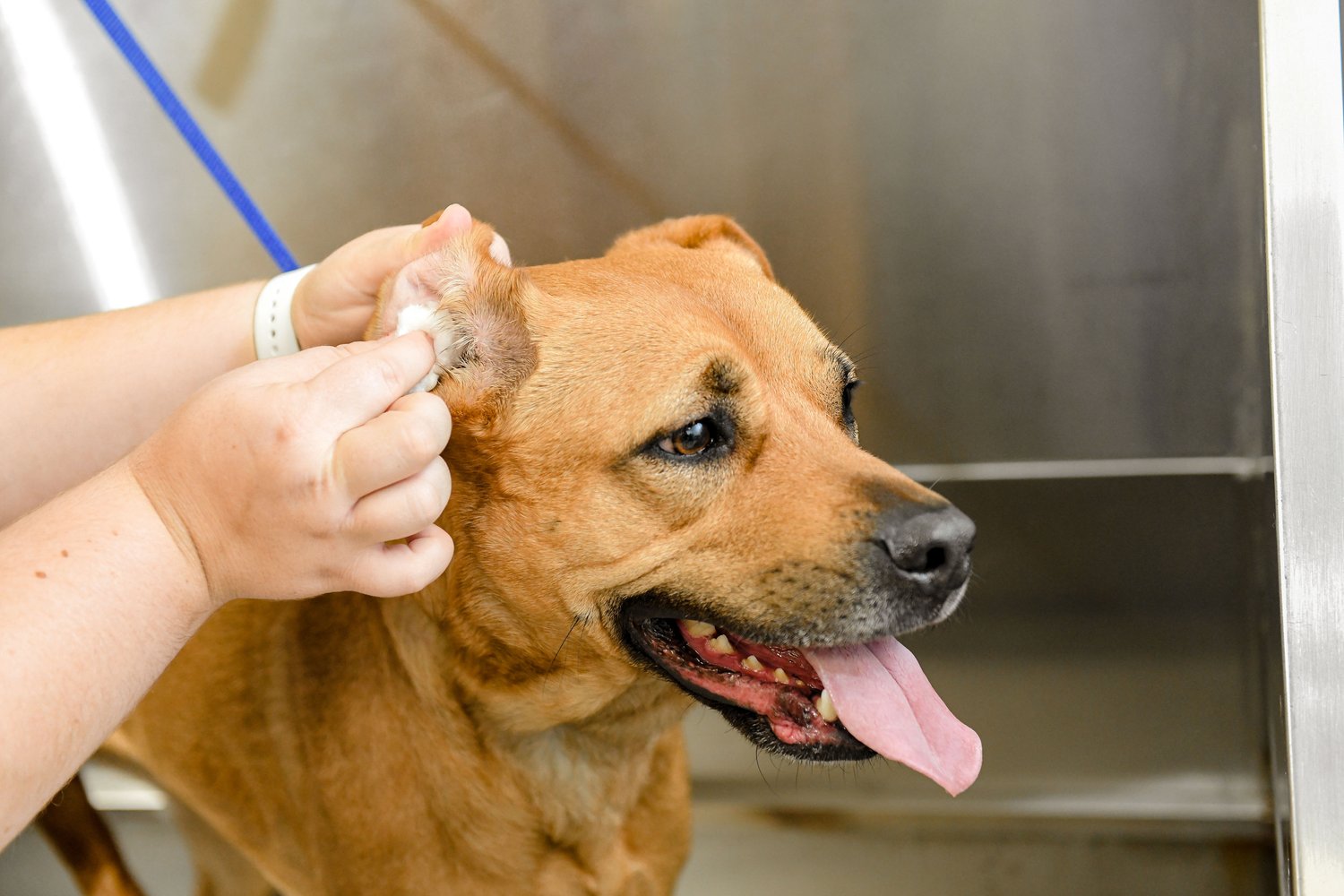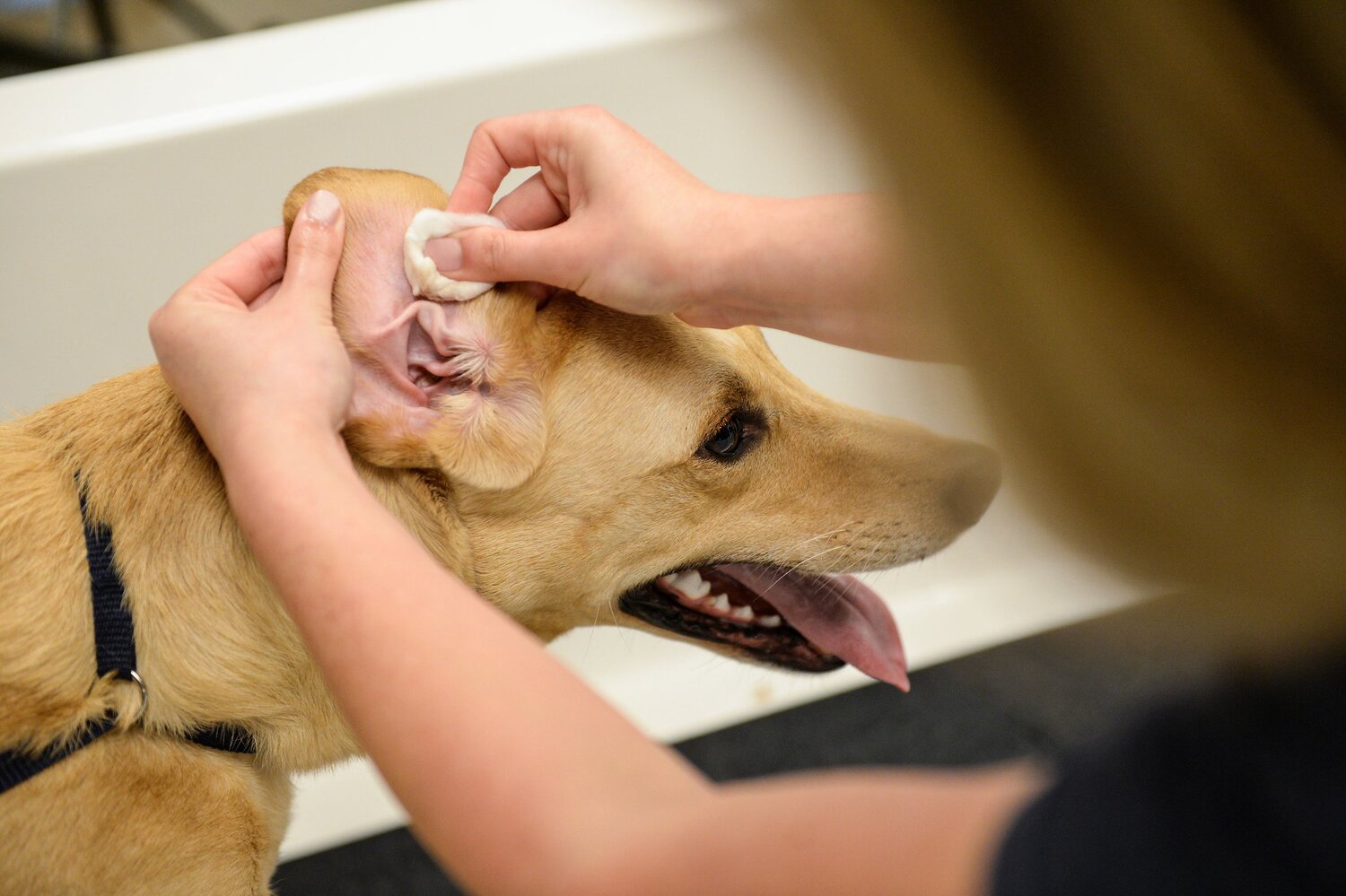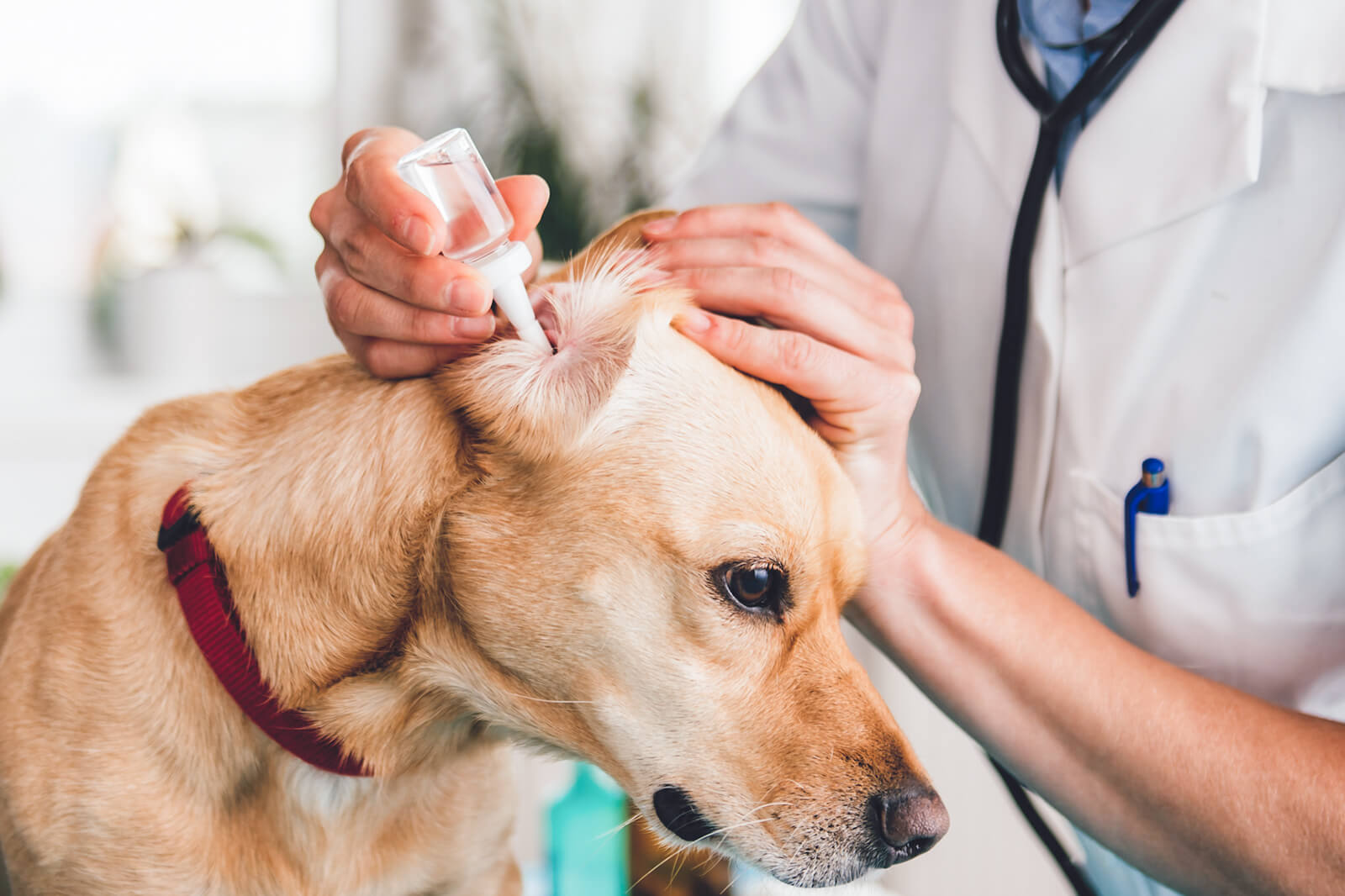Home>Health & Wellness>Common Health Issues>Eye and Ear Health>What Antibiotic Is Used For Dog Eye Infection?
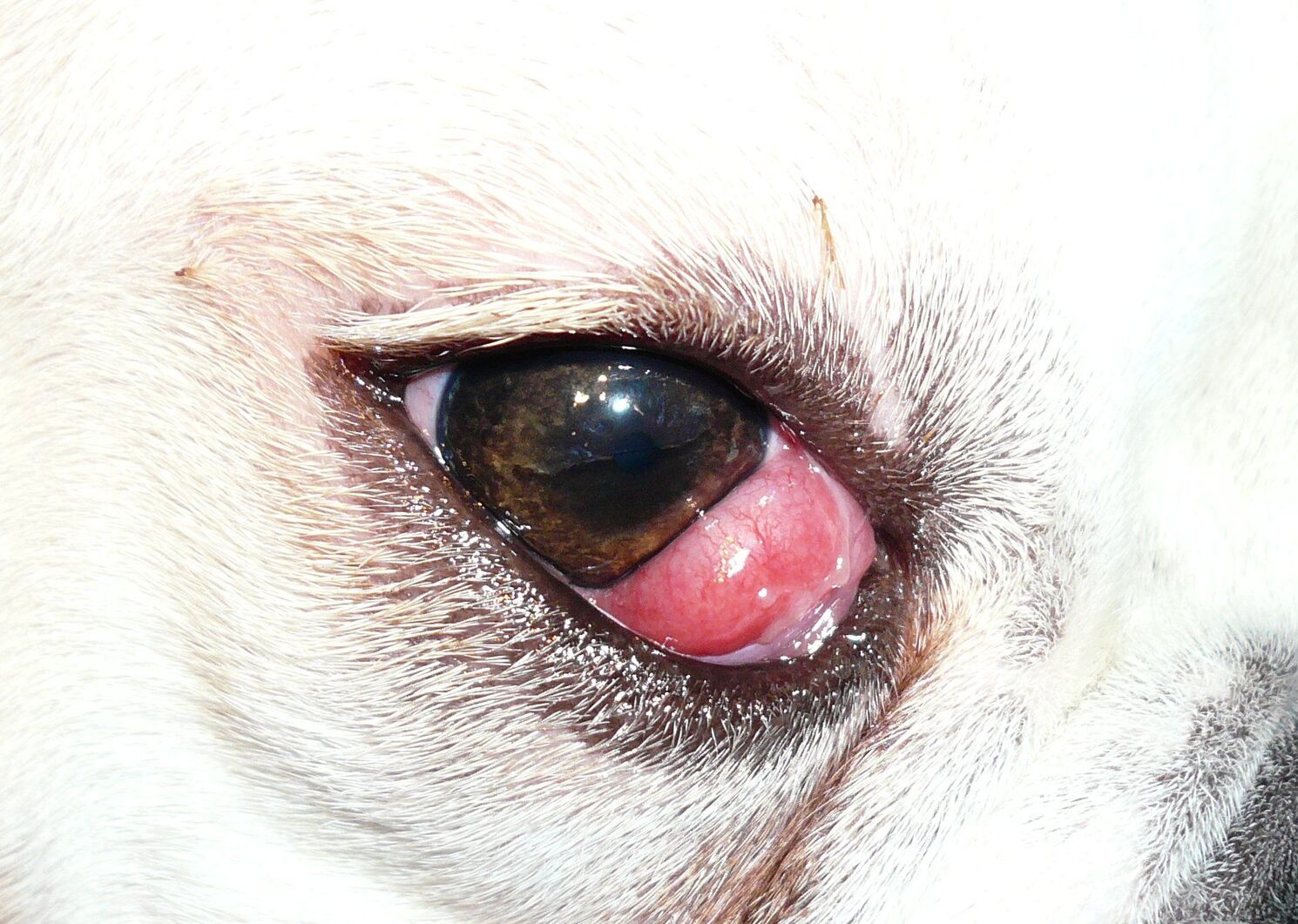

Eye and Ear Health
What Antibiotic Is Used For Dog Eye Infection?
Published: February 12, 2024
Looking for the right antibiotic for your dog's eye infection? Learn about the best options for maintaining your pet's eye and ear health. Discover effective treatments now!
(Many of the links in this article redirect to a specific reviewed product. Your purchase of these products through affiliate links helps to generate commission for Pawsomeoldies.com, at no extra cost. Learn more)
Table of Contents
Introduction
Eye infections in dogs are a common concern for pet owners, as they can cause discomfort and potentially lead to more serious health issues if left untreated. Just like humans, dogs can experience a range of eye infections, from mild irritations to more severe conditions that require prompt medical attention. Understanding the causes, symptoms, diagnosis, and treatment options for dog eye infections is crucial for ensuring the well-being of our furry companions.
In this comprehensive guide, we will delve into the world of dog eye infections, shedding light on the common causes, symptoms, diagnosis methods, and treatment options available. Additionally, we will explore the role of antibiotics in managing dog eye infections, providing valuable insights into the specific antibiotics used and their effectiveness in combating these conditions.
By gaining a deeper understanding of dog eye infections and the role of antibiotics in their treatment, pet owners can be better equipped to recognize potential issues early on and seek appropriate veterinary care. This knowledge empowers us to take proactive measures in safeguarding our canine friends' ocular health, ensuring they can enjoy a life free from the discomfort and complications associated with eye infections.
Read more: What To Do With An Infection In A Dog’s Eye
Common Causes of Dog Eye Infections
Dog eye infections can stem from various factors, ranging from environmental irritants to underlying health conditions. Understanding the common causes of these infections is essential for pet owners to take proactive measures in preventing and addressing ocular health issues in their furry companions.
-
Environmental Irritants: Dogs are often exposed to a myriad of environmental irritants, including dust, pollen, and foreign particles. These irritants can lead to eye infections, causing redness, discharge, and discomfort for the affected canine. Additionally, exposure to smoke or chemical fumes can also contribute to eye irritation and potential infections.
-
Bacterial Infections: Bacteria, such as Staphylococcus and Streptococcus, can infiltrate a dog's eyes, leading to bacterial conjunctivitis or other forms of bacterial infections. These microorganisms can thrive in the moist environment of the eyes, causing inflammation and discharge. Bacterial infections are often contagious and can spread among dogs in close proximity.
-
Viral Infections: Viruses, such as canine distemper virus and herpesvirus, can trigger eye infections in dogs. These infections may manifest as conjunctivitis or more severe ocular conditions, compromising the dog's vision and overall ocular health. Viral eye infections can be particularly challenging to manage and may require specialized treatment approaches.
-
Allergies: Just like humans, dogs can experience allergic reactions that affect their eyes. Allergens such as pollen, mold, and certain foods can trigger allergic conjunctivitis in dogs, leading to redness, itching, and excessive tearing. Identifying and mitigating the underlying allergens is crucial in managing and preventing allergic eye infections in dogs.
-
Trauma or Injury: Physical trauma or injury to the eye can pave the way for infections to take hold. Scratches, foreign objects, or blunt force trauma can compromise the integrity of the eye's protective barriers, making it more susceptible to bacterial or fungal invasion. Prompt veterinary care is essential in addressing eye injuries and preventing secondary infections.
-
Anatomical Abnormalities: Certain anatomical abnormalities in a dog's eye structure can predispose them to recurrent infections. Entropion, a condition where the eyelid rolls inward, and distichiasis, the presence of abnormal eyelashes, can lead to chronic irritation and inflammation, increasing the risk of eye infections.
By recognizing these common causes of dog eye infections, pet owners can be vigilant in monitoring their canine companions for any signs of ocular discomfort or abnormalities. Additionally, implementing preventive measures, such as regular eye hygiene and minimizing exposure to potential irritants, can contribute to maintaining optimal eye health for dogs.
Symptoms of Dog Eye Infections
Recognizing the symptoms of dog eye infections is crucial for timely intervention and effective management of ocular health issues in our furry companions. Dogs may exhibit a range of symptoms when experiencing an eye infection, signaling the need for veterinary assessment and potential treatment. Understanding these symptoms empowers pet owners to take proactive measures in addressing their dog's ocular health concerns.
Common symptoms of dog eye infections include:
-
Redness and Irritation: Infected eyes often appear red and inflamed, indicating the presence of underlying irritation or inflammation. The conjunctiva, the thin membrane covering the inner surface of the eyelids and the whites of the eyes, may take on a reddish hue, signaling a potential infection.
-
Excessive Tearing or Discharge: Dogs with eye infections may experience increased tear production or develop abnormal eye discharge. The discharge can range from clear and watery to thick and purulent, depending on the nature of the infection. Excessive tearing or discharge often indicates an ocular imbalance that requires attention.
-
Squinting or Blinking: Ocular discomfort can lead to squinting or increased blinking in affected dogs. This behavior serves as a protective mechanism, as the dog attempts to alleviate discomfort and shield the affected eye from further irritation. Persistent squinting warrants a thorough examination by a veterinarian.
-
Swelling and Puffiness: Inflamed or infected eyes may exhibit swelling and puffiness, particularly around the eyelids and the surrounding tissues. Swelling can impair the dog's visual comfort and may be accompanied by tenderness or sensitivity to touch.
-
Cloudiness or Opacity: Some eye infections can cause cloudiness or opacity in the affected eye, compromising the dog's visual clarity. This symptom may indicate the presence of a more severe infection or underlying ocular pathology that requires prompt evaluation.
-
Rubbing or Pawing at the Eyes: Dogs experiencing eye discomfort may exhibit increased rubbing or pawing at the affected eye. This behavior reflects the dog's attempt to alleviate itching, pain, or foreign body sensation within the eye, highlighting the need for intervention.
-
Visible Third Eyelid: The emergence of the third eyelid, also known as the nictitating membrane, across a portion of the eye's surface can indicate ocular distress. The visibility of the third eyelid suggests ocular irritation or inflammation that necessitates veterinary attention.
-
Changes in Eye Color: In some cases, eye infections may lead to changes in the dog's eye color or the appearance of abnormal pigmentation. Such alterations can signify underlying inflammatory processes or structural changes within the eye.
By remaining vigilant for these symptoms, pet owners can promptly seek veterinary care when their dogs exhibit signs of ocular discomfort or abnormalities. Early detection and intervention are pivotal in preventing the progression of eye infections and safeguarding the overall ocular health of our beloved canine companions.
Diagnosis of Dog Eye Infections
Accurate diagnosis is fundamental in effectively addressing dog eye infections and tailoring appropriate treatment strategies. When a dog presents with symptoms indicative of an eye infection, veterinary professionals employ a comprehensive approach to diagnose the underlying cause and determine the most suitable course of action. The diagnostic process typically involves a combination of thorough physical examination, ocular assessments, and, in some cases, specialized tests to elucidate the nature and extent of the infection.
During the initial examination, the veterinarian conducts a detailed assessment of the dog's ocular health, paying close attention to the affected eye or eyes. This involves observing the presence of redness, discharge, swelling, or any visible abnormalities in the eye's structure. Additionally, the veterinarian may evaluate the dog's overall health and inquire about any recent environmental exposures or behavioral changes that could be linked to the eye infection.
Ocular assessments play a pivotal role in diagnosing dog eye infections, often involving the use of specialized tools and techniques. The veterinarian may employ a slit lamp to examine the eye's anterior segment in detail, allowing for precise visualization of the cornea, iris, and lens. This aids in identifying any corneal ulcers, foreign bodies, or other ocular anomalies contributing to the infection. Furthermore, the veterinarian may perform a fluorescein stain test to detect corneal abrasions or lesions, providing valuable insights into the extent of ocular damage.
In cases where the underlying cause of the eye infection is not readily apparent, additional diagnostic tests may be recommended. Ocular swabs or cultures can be obtained to identify the specific pathogens responsible for the infection, such as bacteria or fungi. These samples are meticulously analyzed in a laboratory setting, enabling the veterinarian to pinpoint the causative agents and tailor targeted treatment regimens. Moreover, tear film assessments and intraocular pressure measurements may be conducted to rule out underlying conditions such as dry eye or glaucoma, which can exacerbate eye infections.
By leveraging a combination of physical examinations, ocular assessments, and specialized tests, veterinarians can accurately diagnose dog eye infections and formulate tailored treatment plans. This comprehensive approach ensures that the underlying cause of the infection is identified, paving the way for effective management and resolution of ocular health issues in our beloved canine companions.
Treatment Options for Dog Eye Infections
The treatment of dog eye infections encompasses a multifaceted approach aimed at alleviating ocular discomfort, combating the underlying cause of the infection, and promoting the dog's overall ocular health. Upon a thorough diagnosis of the specific type and severity of the eye infection, veterinarians may recommend various treatment modalities tailored to address the canine's unique needs.
-
Topical Medications: Ophthalmic ointments or eye drops are commonly prescribed to deliver targeted medication directly to the affected eye. These topical medications may contain antibiotics to combat bacterial infections, antiviral agents for viral conditions, or anti-inflammatory compounds to reduce ocular inflammation. The application of topical medications requires careful administration to ensure proper dosage and adherence to the prescribed treatment regimen.
-
Oral Medications: In cases of more severe or systemic eye infections, veterinarians may prescribe oral medications such as antibiotics or antiviral drugs to address the underlying cause. Oral medications are particularly beneficial in managing infections that have spread beyond the immediate ocular area or those stemming from systemic conditions.
-
Ocular Irrigation: For eye infections resulting from environmental irritants or foreign bodies, ocular irrigation may be performed to flush out debris and alleviate ocular discomfort. This procedure helps cleanse the affected eye and remove potential sources of irritation, contributing to the dog's ocular recovery.
-
Warm Compresses: Application of warm compresses can aid in soothing ocular inflammation and promoting drainage of ocular discharge. This simple yet effective technique can provide relief for dogs experiencing discomfort due to eye infections, helping to alleviate swelling and promote healing.
-
Surgical Intervention: In cases of severe trauma, anatomical abnormalities, or advanced infections, surgical intervention may be necessary to address the underlying issues. Procedures such as eyelid correction surgery, foreign body removal, or treatment of corneal ulcers may be performed to restore the dog's ocular health and prevent recurrent infections.
-
Environmental Management: Preventive measures, such as minimizing exposure to potential irritants, implementing regular eye hygiene practices, and creating a clean and safe environment for the dog, play a crucial role in managing and preventing recurrent eye infections. Environmental management strategies aim to reduce the dog's susceptibility to ocular irritants and pathogens, contributing to long-term ocular health.
-
Follow-Up Care: After initiating treatment, regular follow-up appointments with the veterinarian are essential to monitor the dog's ocular response to treatment, assess any changes in symptoms, and make necessary adjustments to the treatment plan. Close veterinary supervision ensures that the dog's ocular health is effectively managed and any emerging issues are promptly addressed.
By combining these treatment options with attentive care and adherence to veterinary recommendations, pet owners can play a pivotal role in supporting their dog's recovery from eye infections. The collaborative efforts of pet owners and veterinary professionals are instrumental in ensuring the successful resolution of dog eye infections and the preservation of optimal ocular health for our beloved canine companions.
Antibiotics Used for Dog Eye Infections
Antibiotics play a crucial role in the management of dog eye infections, particularly those caused by bacterial pathogens. When prescribed judiciously by veterinary professionals, antibiotics can effectively combat bacterial eye infections, alleviate ocular discomfort, and facilitate the dog's recovery. Understanding the specific antibiotics used for dog eye infections and their mechanisms of action is essential for pet owners seeking to support their canine companions' ocular health.
Commonly prescribed antibiotics for dog eye infections include:
-
Neomycin-Polymyxin B-Gramicidin: This combination antibiotic ointment is widely utilized in veterinary ophthalmology to address bacterial conjunctivitis and other ocular infections. Neomycin and polymyxin B target a broad spectrum of bacteria, while gramicidin provides additional antibacterial activity, making this ointment effective against various bacterial pathogens.
-
Ciprofloxacin: Ciprofloxacin, a fluoroquinolone antibiotic, is frequently employed to combat bacterial eye infections in dogs. Its broad-spectrum antibacterial properties make it effective against both gram-positive and gram-negative bacteria, offering a versatile treatment option for a range of ocular infections.
-
Tobramycin: As an aminoglycoside antibiotic, tobramycin is valued for its efficacy in addressing bacterial eye infections, including those caused by Pseudomonas aeruginosa. Its bactericidal action against a wide array of bacteria makes it a valuable tool in the veterinary management of canine ocular health.
-
Chloramphenicol: Chloramphenicol, though reserved for specific cases due to its potential side effects, is utilized in the treatment of certain bacterial eye infections in dogs. Its broad antibacterial spectrum and ability to penetrate ocular tissues make it a viable option for addressing resistant bacterial strains.
-
Erythromycin: Erythromycin, a macrolide antibiotic, is employed in the management of bacterial conjunctivitis and other ocular infections in dogs. Its mechanism of action involves inhibiting bacterial protein synthesis, effectively impeding the growth and proliferation of susceptible bacteria in the eye.
When administering antibiotics for dog eye infections, it is imperative to adhere to the prescribed dosage and treatment duration as directed by the veterinarian. Additionally, pet owners should closely monitor their dog's response to the antibiotic treatment, reporting any adverse reactions or changes in ocular symptoms to the veterinary professional.
By understanding the role of antibiotics in managing dog eye infections and collaborating closely with veterinary professionals, pet owners can contribute to the successful resolution of bacterial ocular infections in their beloved canine companions. This proactive approach supports optimal ocular health for dogs, ensuring they can enjoy a life free from the discomfort and complications associated with eye infections.
Conclusion
In conclusion, dog eye infections are a prevalent concern that can significantly impact the ocular health and overall well-being of our beloved canine companions. Understanding the common causes, symptoms, diagnosis methods, treatment options, and the role of antibiotics in managing these infections is pivotal for pet owners in safeguarding their dogs' ocular health.
By recognizing environmental irritants, bacterial and viral infections, allergies, trauma, and anatomical abnormalities as potential triggers for dog eye infections, pet owners can implement preventive measures to minimize their canine companions' susceptibility to ocular issues. Regular monitoring for symptoms such as redness, discharge, squinting, and swelling empowers pet owners to promptly seek veterinary care when signs of eye infections arise, facilitating early intervention and effective management.
The diagnostic process for dog eye infections involves comprehensive physical examinations, ocular assessments, and, when necessary, specialized tests to accurately identify the underlying cause of the infection. This thorough approach enables veterinary professionals to tailor targeted treatment plans, encompassing topical and oral medications, ocular irrigation, warm compresses, surgical interventions, and environmental management strategies.
Antibiotics, such as neomycin-polymyxin B-gramicidin, ciprofloxacin, tobramycin, chloramphenicol, and erythromycin, play a crucial role in combating bacterial eye infections in dogs. When prescribed and administered in accordance with veterinary guidance, these antibiotics effectively address bacterial pathogens, alleviate ocular discomfort, and contribute to the successful resolution of dog eye infections.
By collaborating closely with veterinary professionals, pet owners can actively participate in their dogs' ocular health management, ensuring adherence to treatment regimens, monitoring treatment responses, and seeking timely follow-up care. This collaborative approach fosters optimal ocular health for dogs, minimizing the impact of eye infections and promoting a life free from ocular discomfort and complications.
In essence, the proactive involvement of pet owners, coupled with the expertise of veterinary professionals, is instrumental in safeguarding the ocular health of our canine companions. By staying informed, vigilant, and proactive, pet owners can create a nurturing environment that supports their dogs' ocular well-being, allowing them to experience the world through clear, healthy eyes and enjoy a vibrant, fulfilling life alongside their human companions.

